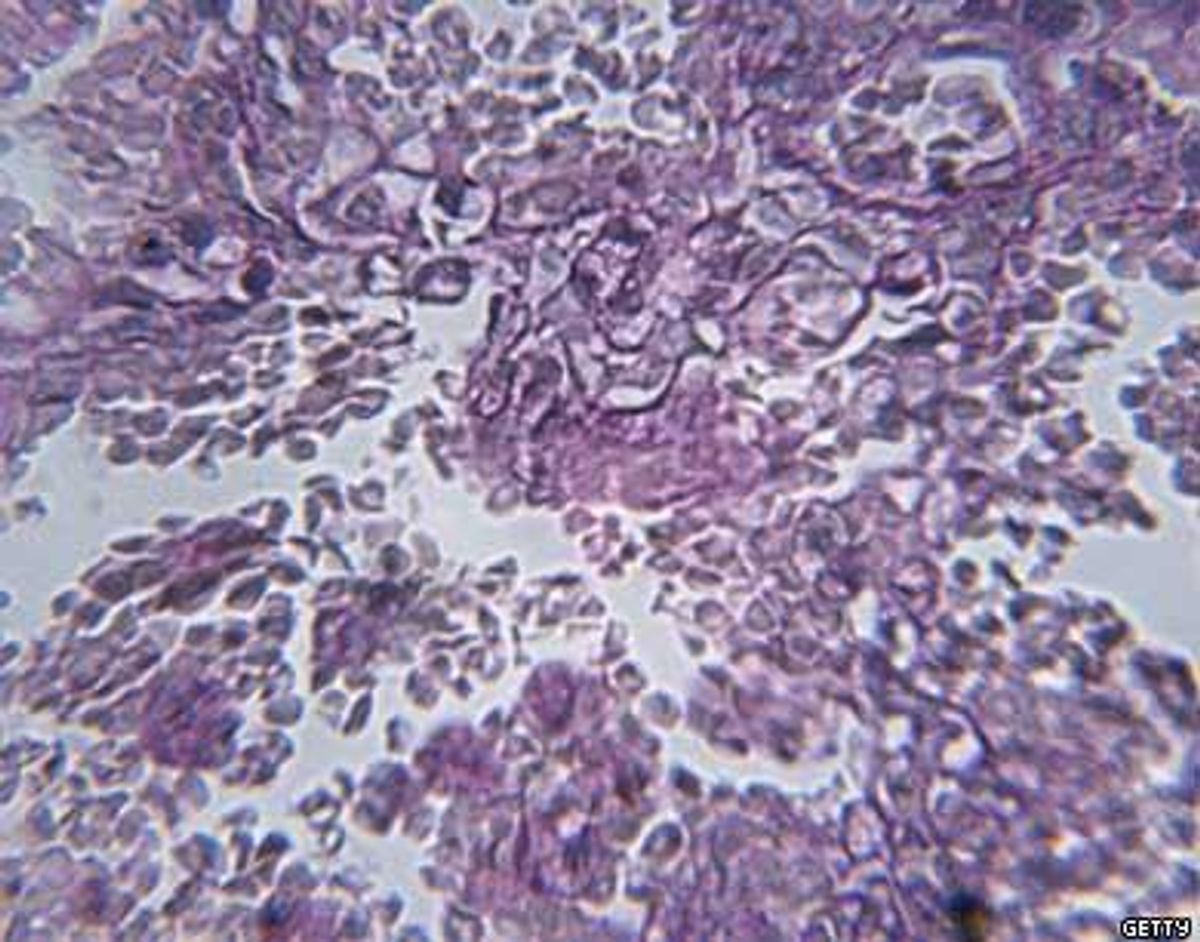World
HIV Screening
HIV Screening

HIV, or the human immunodeficiency virus, attacks the immune system, your body's defense mechanism against infection.
Advocate.com Editors
October 13 2008 12:00 AM EST
November 17 2015 5:28 AM EST
By continuing to use our site, you agree to our Private Policy and Terms of Use.
HIV Screening

HIV, or the human immunodeficiency virus, attacks the immune system, your body's defense mechanism against infection.
HIV, or the human immunodeficiency virus, attacks the immune system, your body's defense mechanism against infection. One of the most important components of the immune system is CD4 cells, or T-cells. HIV attacks T-cells and is passed from one person to the next by contact with blood or other bodily fluids, like semen. The usual mode for gay men is unsafe anal intercourse. Studies suggest that you are infected not at the immediate time of exposure to HIV but after a window up to seventy- two hours. Usually, symptoms develop after four to six weeks and include fever, headache, tiredness, and enlarged lymph nodes, or what we call a mononucleosistype syndrome. "Mono" is the kissing disease some of you might have had as a teenager. HIV antibodies, however, can take from three to even twelve months to develop in a person. This mechanism of converting to HIV- positive is called seroconversion. Once you have seroconverted, you can detect HIV antibodies in the blood, but you may not have any symptoms. If left untreated, HIV is a fatal disease. Currently, there is no cure for HIV, but the development of many treatments over the past two decades has made it largely a chronic, manageable disease.
Back in 1981, the CDC reported five gay men who were being treated for Pneumocystis carinii pneumonia, which later was determined to be AIDS- related; however, it is believed that HIV was detected as early as 1959. In 1982, the term AIDS, or acquired immune deficiency syndrome, was coined. The NIH defines AIDS as an advanced stage of HIV usually marked by a T-cell count less than 200 cells per milliliter of blood. This allows "opportunistic" infections to develop, which are severe and sometimes fatal, because the body can no longer fight them. It was not until 1987 that the first drug, AZT (retrovir), was approved for the treatment of HIV. Later, with the development of the protease inhibitors, the mortality rate from HIV was greatly diminished. HAART, or highly active antiretroviral treatment, was established as the standard of care, and the term cocktail was used to describe the increasing number of multidrug regimens available to treat HIV.
Men who have sex with men (MSM) are at an increased risk of developing HIV. From 2002 to 2006, the CDC reported a growing trend of 10 percent in the number of new cases of HIV. This led to their recommendation that HIV testing be made available to all patients thirteen years and older if they are sexually active. More alarming is the fact that new diagnoses have doubled among New York City MSM ages thirteen to nineteen. Despite the decline in older men, there exists a sense of complacency concerning HIV. The disease is manageable but to relegate it as another chronic condition like diabetes could be dangerous. The fact is there is a lack of familiarity among younger gay men concerning the AIDS epidemic. Categorizing HIV as a chronic disease makes many gay men feel that it is less of a threat. There are even some who see HIV as "no big deal" and make the assumption that it is an inevitable part of life. Despite the clear benefits of a "one- pill- once- a-day regimen," HIV is still considered incurable and some men do not respond to drug therapy. The main questions concerning HIV is: How would you view having any other chronic disease? Would you want to be diabetic if you had the choice? Certainly no one should want to be infected especially when it can be prevented. As for those who are positive, of course the simplicity and potency of the newer regimens has altered the course of HIV. Now those who are positive can expect to live out their full life expectancy; yet diminishing this disease as "no big deal" could be further misconstrued by a generation of younger gay men.
As of 2007, there were over one million people in the United States infected with HIV, and of those about 25 percent don't know they have it. Even more frightening is the fact that nearly 25 percent of people with HIV are, at the time of diagnosis, already in an advanced state of AIDS. Back in the 1980s, a diagnosis of HIV was considered a death sentence. Fortunately, that is not the case anymore. There are many treatment options available now, with fewer pills and better tolerability. It is estimated that if someone is diagnosed with HIV, they can live out their full life as long as they maintain their health. The key is education with an emphasis on prevention, but more important is the knowledge you've been infected. The current recommendation for HIV screening is annually; however, for sexually active MSMs, I recommend every three to six months.